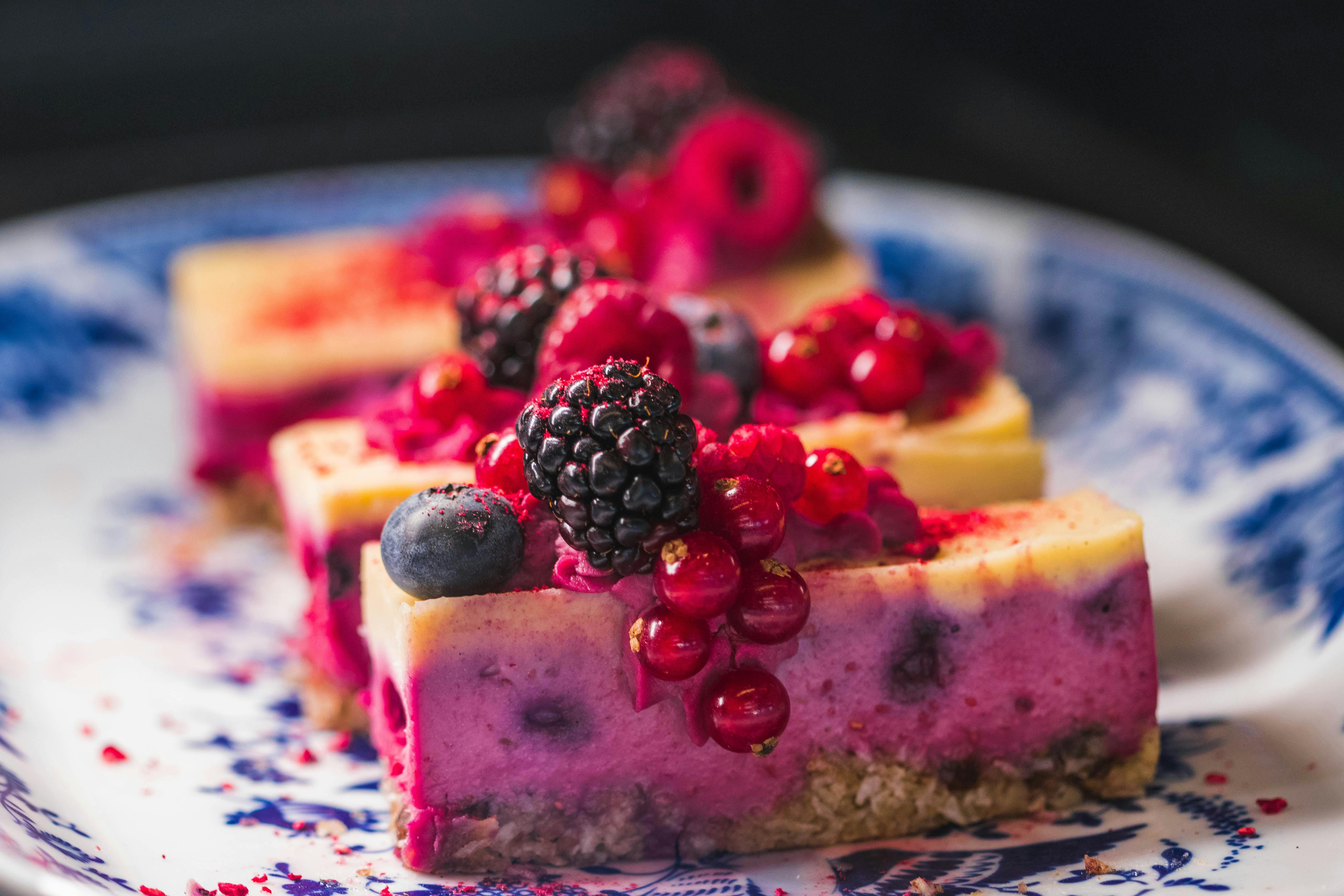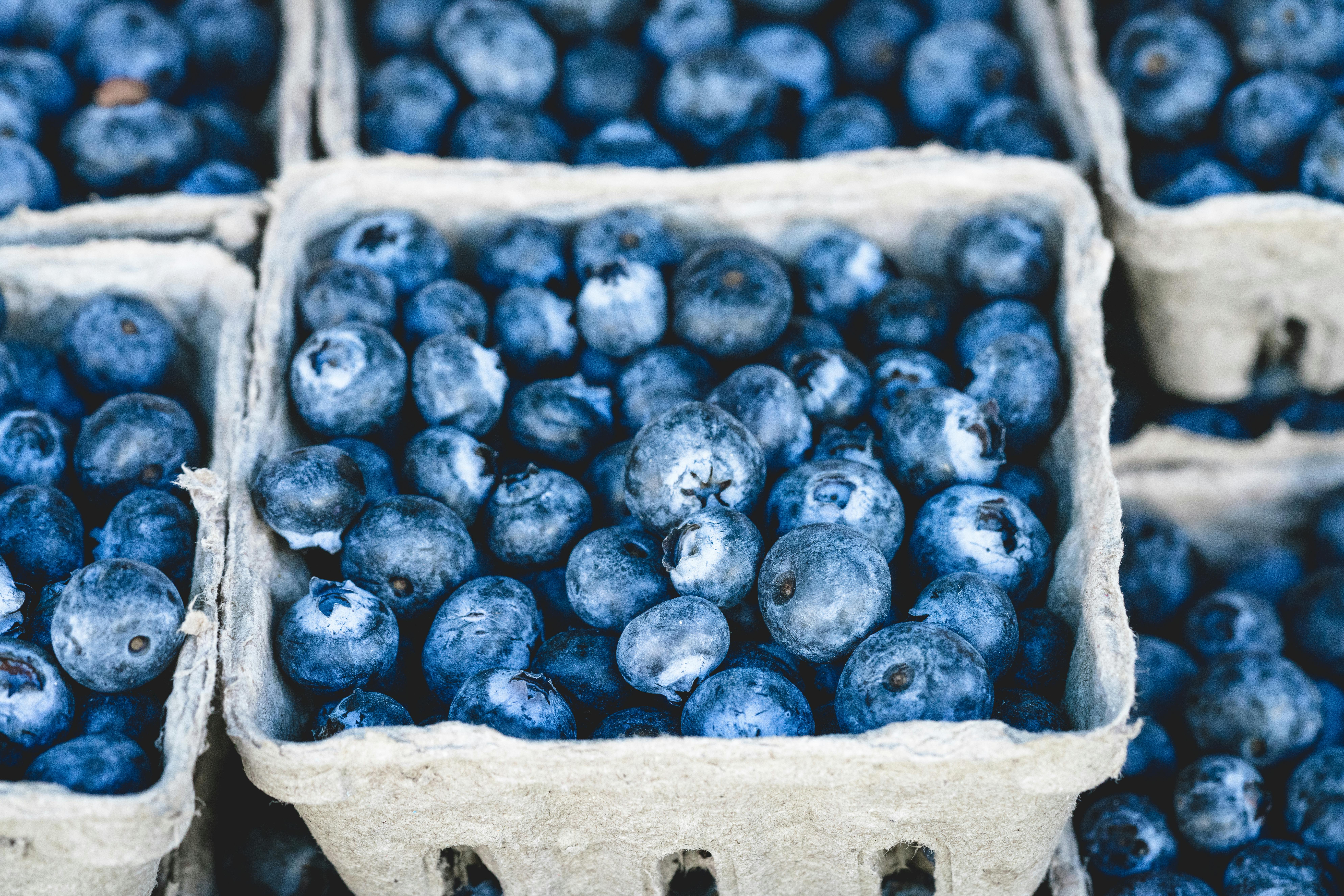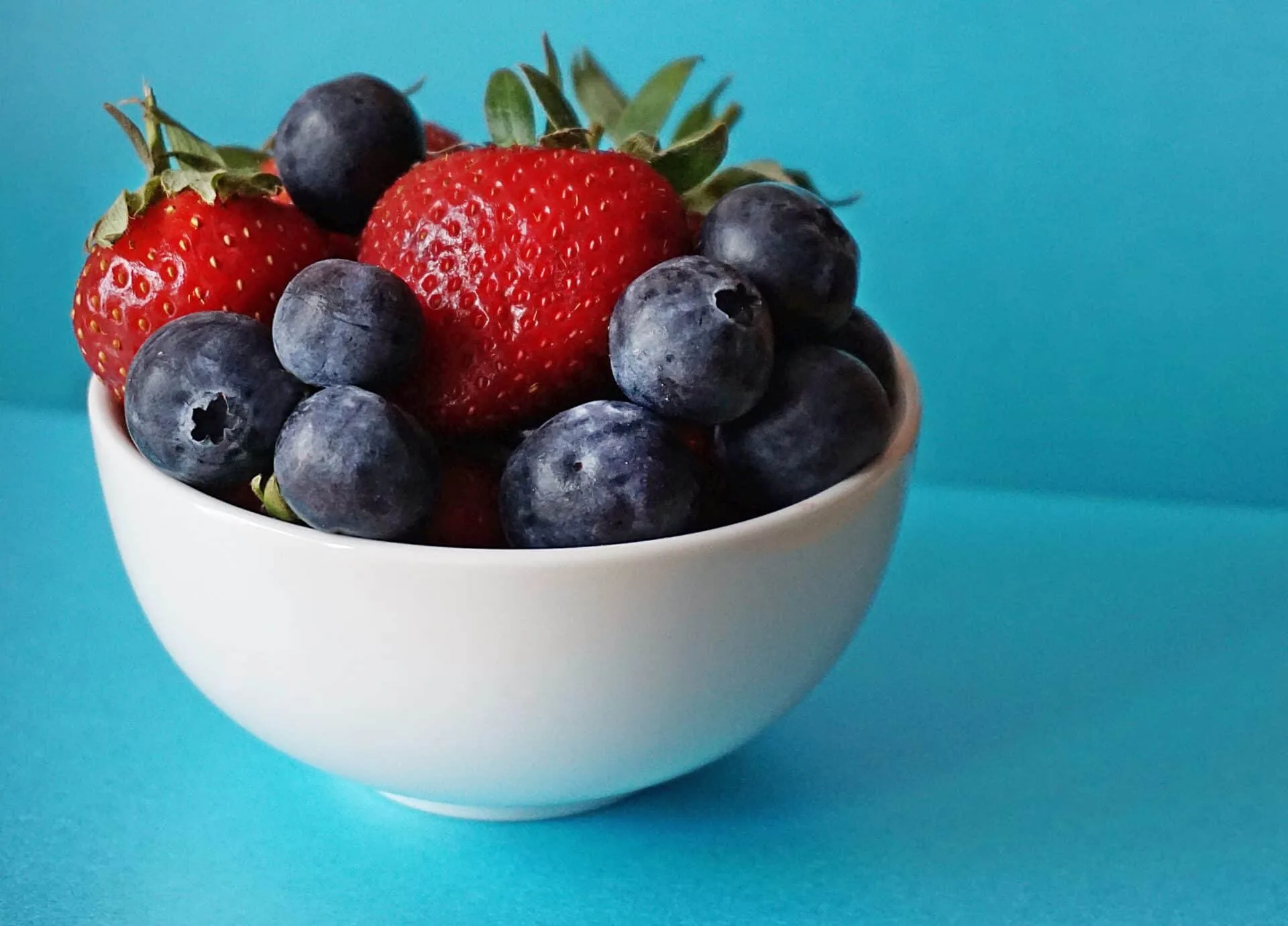Are blueberries sweet or sour? It’s an age-old question that has been debated ever since the first blueberry was plucked from a bush. In truth, the answer to this question is not so clear-cut as one might think. While some blueberries are indeed sweet, others can be quite sour. So, it really depends on the variety and ripeness of the berry itself.Blueberries are generally sweet in taste, but can vary in their level of sweetness depending on when they are picked and how ripe they are. A fully ripe blueberry typically has a sweet flavor, while an unripe or under-ripe berry will have a more tart and sour taste.
What is the Taste of Blueberries?
Blueberries have a unique flavor that is both sweet and tart. They have a juicy texture and are often described as having an earthy, berry-like flavor. The sweetness of blueberries can range from mild to intense, depending on the variety. Some have a fruity taste with hints of citrus, while others can be more tart. The flavor of blueberries is complemented by their nutrient-rich content, which includes vitamins, minerals, and antioxidants.
Blueberries are incredibly versatile and can be used in a variety of recipes from cakes and muffins to salads and smoothies. They can also be eaten raw or cooked into jams or pies for a sweet treat. The best way to enjoy the flavor of blueberries is to pick them fresh off the bush when they are in season or buy them from your local grocery store. Either way you’re sure to enjoy the sweet-tart taste that makes blueberries so special.
Is there a Difference in Taste between Different Types of Blueberries?
Blueberries are one of the most popular fruits, and with good reason. Not only do they have a delicious taste, but they are also packed with antioxidants and other essential vitamins and minerals. But did you know that there are actually several different types of blueberries? Yes, it’s true! And each type has its own unique flavor profile.
The most common type of blueberry is the highbush blueberry. This type is known for its sweet flavor and firm texture and is often used in jams, pies, and other recipes. The lowbush blueberry, or wild blueberry, has a much more tart flavor, as well as a softer texture. Wild blueberries are usually smaller than highbush varieties and have a deeper purple hue.
The rabbiteye blueberry is another variety that’s gaining popularity due to its distinctive flavor profile. This type has a sweet-tart taste that some people find to be more enjoyable than either the highbush or wild varieties. Lastly, there is the southern highbush blueberry which has a slightly sweeter flavor than the other varieties.
So when it comes to tasting different types of blueberries, there’s certainly something for everyone! Whether you prefer the sweet taste of the highbush variety or the tartness of the wild or rabbiteye types, you can enjoy all sorts of delicious flavors when it comes to this amazing fruit.
Ultimately, all types of blueberries have their own unique flavors that make them worth trying out – so why not give them all a try? You may just find yourself pleasantly surprised by how much you like some of these lesser-known varieties!
Sweet and Sour Fruits
Fruits can be divided into two distinct categories: sweet and sour. Sweet fruits are generally higher in sugar content and have a sweeter taste, while sour fruits are usually more acidic in flavor. Sweet fruits tend to be softer and juicier than their sour counterparts.
Common examples of sweet fruits include apples, pears, bananas, oranges, melons, peaches, grapes, strawberries, and cherries. These fruits typically have a higher sugar content that gives them their sweet taste.
Sour fruits are generally higher in acidity than sweet fruits and often have a tart flavor. Common examples of sour fruits include lemons, limes, cranberries, grapefruits, passion fruit, rhubarb, kiwi fruit, tamarinds, gooseberries, and pomegranates. These fruits typically contain high levels of citric acid or malic acid which gives them their characteristic tangy taste.
When it comes to nutrition content between sweet and sour fruits there is not a huge difference between the two types of fruit. Both types contain important vitamins such as vitamin C as well as fiber and antioxidants. However it is important to note that some sweet fruits such as grapes may contain higher amounts of sugar than other types of fruit so it is important to always read labels when purchasing food items in order to make sure you are getting the best nutrition for your body.
In conclusion both sweet and sour fruits are an important part of any healthy diet as they provide essential vitamins and minerals along with fiber and antioxidants that help keep the body functioning properly. When choosing which type of fruit to purchase it is important to read labels so you know what type of nutrition you are getting for your money.
How do You Know if a Fruit is Sweet or Sour?
Tasting a fruit is the best way to determine if it is sweet or sour. Most fruits will have some degree of sweetness or tartness. However, there are some ways to tell the difference between sweet and sour fruits.
One of the easiest ways to tell a fruit’s sweetness is by its color. Generally, darker colored fruits such as cherries, plums, and blackberries tend to be sweeter than lighter colored fruits like apples and oranges.
The smell of a fruit is also an indicator of its sweetness level. Fruits with a strong, sweet smell generally have higher sugar content than those with a milder smell.
The texture of the skin can also be used to determine if a fruit is sweet or sour. Fruits that are soft and pliable when squeezed usually contain more sugar than those that are hard and crunchy.
Finally, tasting the fruit itself is one of the surest ways to determine its sweetness level. While you may not want to bite into every piece of produce you come across, sampling small pieces can help you decide whether it will taste sweet or sour before buying it.

What Factors Contribute to the Taste of Blueberries?
Blueberries are a sweet and flavorful fruit that many people love. But what contributes to the taste of blueberries? There are several factors that play a role in the flavor of blueberries, including soil type, climate, and ripeness.
Soil type is an important factor in the taste of blueberries. Different soils can result in different flavors, as some may have higher levels of nutrients or minerals that affect the taste. The pH of the soil can also influence flavor, as acidic soils lead to more tart-tasting fruits while alkaline soils produce sweeter fruits.
Climate is another factor that affects the flavor of blueberries. Cooler climates generally produce smaller and tarter blueberry fruits while warmer climates produce larger and sweeter fruits. The amount of sunlight and rainfall also plays a role in how sweet or tart the berries will be.
Ripeness is also an important factor when it comes to flavor. Blueberries should be picked when they are ripe and not allowed to over-ripen on the vine for optimal sweetness. Underripe berries tend to be tart while overripe berries can be too sweet or even sour if left on the vine too long.
These are some of the factors that contribute to the taste of blueberries, but there are other factors at play as well such as genetics, irrigation practices, and fertilization methods used by farmers. All these elements come together to create a unique flavor profile for each individual blueberry!
How Do Certain Growing Conditions Affect the Taste of Blueberries?
The taste of blueberries is heavily dependent on the growing conditions they are exposed to. There are several environmental factors that can contribute to a blueberry’s flavor, including soil quality, water availability, temperature, sunlight exposure, and fertilization. All of these variables work together to determine the taste of any particular blueberry crop.
Soil quality plays an important role in the growth and development of a blueberry plant. The soil must have adequate nutrients and organic matter for good root growth and fruit production. Nutrient-rich soils tend to produce sweeter fruit than those with a lower nutrient content. Additionally, acidic soils may also help enhance the flavor of the berries by improving their sugar content.
Water availability is another important factor when it comes to growing tasty blueberries. Too much or too little water can affect the quality of the berries. Too little water can lead to a smaller crop size and smaller berry sizes, while too much can cause over-fertilization which can affect the sugar levels in the berries.
Temperature is also a significant factor when it comes to growing sweet-tasting berries. Warmer temperatures tend to produce sweeter fruit than cooler temperatures as it helps boost photosynthesis which increases sugar levels in the fruits.
Sunlight exposure plays an important role in boosting photosynthesis and increasing sugar levels in blueberries as well as promoting healthy leaf growth and fruit production. This means that plants that receive more sunlight will produce sweeter fruit than those exposed to less light during their growing season.
Fertilization is another key factor in determining how sweet or tart a particular crop will be. Over-fertilizing a blueberry plant can lead to higher acidity levels which results in a tarter tasting berry, while under-fertilizing can reduce yields and lead to smaller berry sizes with less flavor overall.
Overall, there are many different environmental factors that play an important role in determining how sweet or tart any particular blueberry crop will be. By understanding how these factors interact with each other, growers can optimize their growing conditions for maximum sweetness and flavor when it comes to their blueberry crops!
Making Blueberries Sweeter or Sourer through Cooking Techniques
It is possible to make blueberries sweeter or sourer through cooking techniques. For example, by boiling blueberries in sugar syrup, the natural sweetness of the berries is enhanced. Alternatively, adding a small amount of vinegar or lemon juice to the mix can make the blueberries taste more sour. To further enhance the flavor of blueberries, adding spices such as cinnamon and nutmeg can make them more flavorful.
Another way to make blueberries sweeter or sourer is by using different cooking methods. For example, roasting blueberries at a high temperature over a long period of time will caramelize their natural sugars and bring out their sweetness. Conversely, stewing them in a mixture of sugar and water will draw out their tartness.
Finally, adjusting the amount of sugar used when making jams or pies with blueberries can also affect their sweetness or sourness. Adding extra sugar will increase the sweetness while reducing the amount of sugar used will result in a more tart flavor. Additionally, using different types of sweeteners such as honey or maple syrup instead of regular white sugar can also bring about subtle changes in flavor.
In conclusion, it is possible to make blueberries sweeter or sourer through various cooking techniques such as boiling in syrup, adding vinegar or lemon juice to enhance sourness, roasting at high temperatures for increased sweetness, stewing in sugar and water to draw out tartness and adjusting the amount of sugar used when making jams and pies. With these methods it is possible to create unique flavors and textures that can greatly enhance any dish featuring blueberries.

Conclusion
In conclusion, blueberries are generally considered to be a sweet fruit. However, their level of sweetness can vary depending on the variety, ripeness, and growing conditions. Some blueberries may have a slightly tart taste due to their naturally high content of citric acid. While most people enjoy the sweet taste of blueberries, those who prefer a more sour flavor can enjoy them by adding lemon juice or other tart ingredients. Overall, blueberries are a delicious way to add sweetness and flavor to any recipe.
No matter what flavor preference you have, blueberries can be enjoyed and used in many recipes. Whether you like them sweet or sour, they are sure to provide you with a tasty treat that is both nutritious and flavorful!



